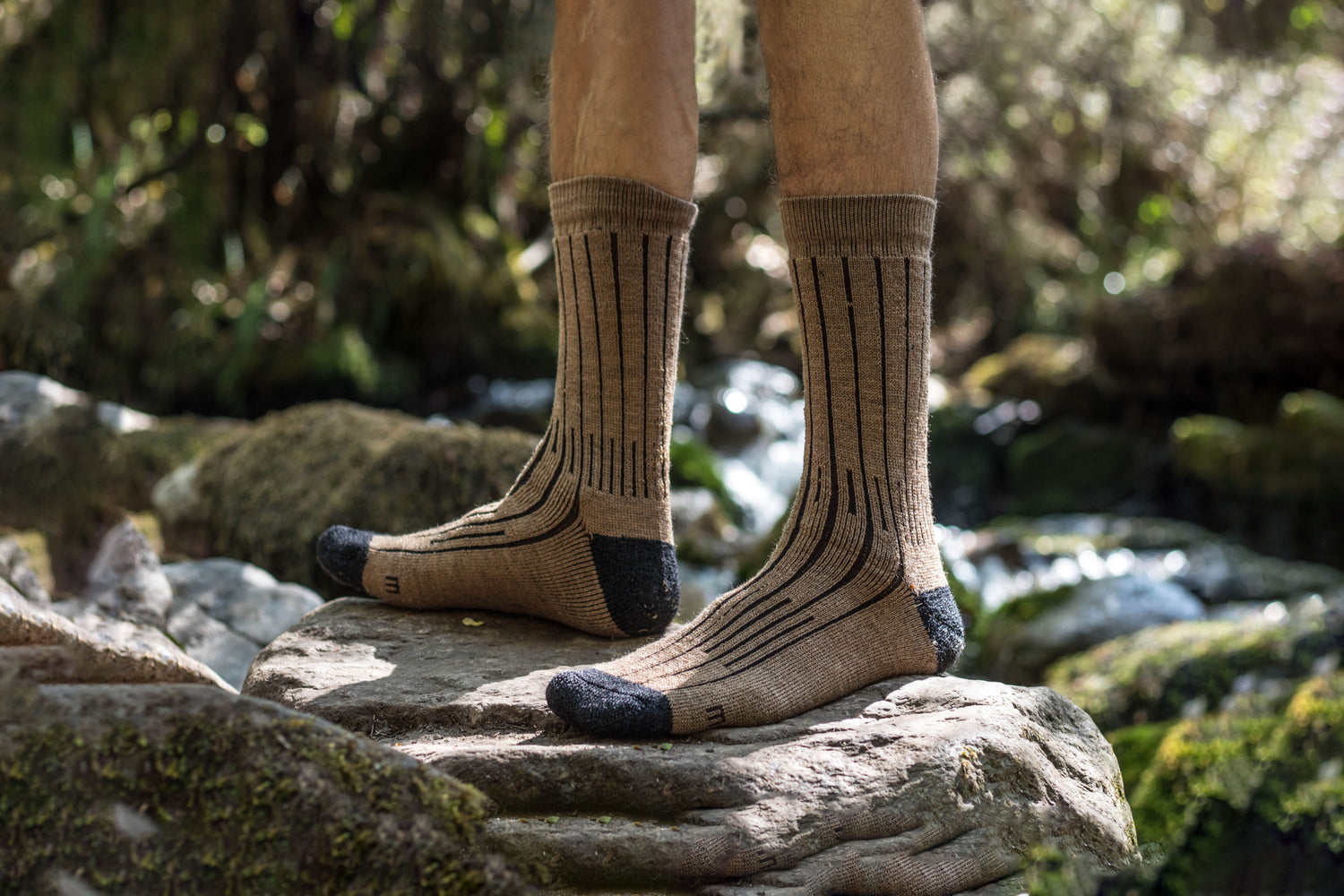Alpaca Kingdom
Knitted from our specially coordinated blend of natural fibers, the Andina Outdoors socks adapt to warm and cold conditions. Moisture is wicked away to the outside, preventing the formation of odors.
The Andina Outdoors products keep your feet dry and are particularly comfortable to wear at all times.
The special blend consists of natural and sustainable fibers from the South American Andes:
- 50% baby alpaca from the high and remote areas of Peru
- 20% merino wool from Patagonia
- 10% bamboo from our natural resources
- 11% nylon to increase durability
- 6% elastane to improve performance
- 3% spandex for a perfect fit
The optimally placed padding for cushioning cushions the impact of the foot on the ground and still keeps the foot light and fresh.
Our Aquiles heel tab provides optimal protection against chafing and blisters, while the elastic arch support keeps the socks on the foot as desired.
Long durability and optimal stretchability thanks to a nylon/spandex inner net. With their strong resistance, they also protect your skin from sun damage.
- The special, natural alpaca fibers come from free alpaca herds that live in natural ecosystems in the Andean highlands of Peru. Once a year, they are sheared in a particularly gentle manner and the fleece is sorted. The alpaca wool has 52 natural shades of color.
- Not a chemical fiber, but an environmentally friendly and sustainable production that does not change our alpaca production with the added value given by nature, but preserves it and benefits from it.
- The alpaca fibers support the body's thermoregulatory effects and thus create a vapor barrier that cools in warm weather and warms in cool weather. This makes the socks an excellent insulator.
- No unpleasant moisture build-up - because the surface of our fiber mixture helps to improve the evaporation rate and keeps your foot dry and comfortable even after long use



